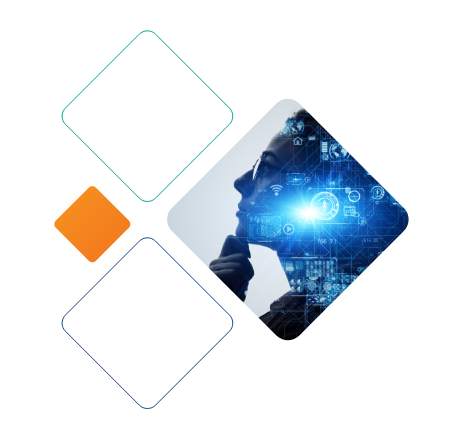


Uncovering value in your subsurface legacy data with AI
Uncovering value in your subsurface legacy data with AI
When
Wednesday, March 12 | 12:00 pm ET | 60 min
When
Wednesday, March 12 | 12:00 pm ET | 60 min
Where
Online
Where
Online
Will you be attending?

The digitization of legacy subsurface data is vital for optimizing seamless data access and improving decision-making. A typical legacy subsurface data library can potentially be a billion dollar asset (Reed and Macalla, 2022). However, the value derived from the information in that library is dependent on the ability of end users to find and access the relevant data from potentially decades of legacy reports and documents.
In this webinar with our partner Katalyst Data Management, we will explore the significance of converting non-digital records into findable and accessible indexed and standardized content. We will discuss the challenges in managing digital transformation, and highlight the importance of metadata in successful application of AI tools to subsurface data. In addition, you'll get to view a demo of our new joint solution to share functionality including:
What you'll learn
The digitization of legacy subsurface data is vital for optimizing seamless data access and improving decision-making. A typical legacy subsurface data library can potentially be a billion dollar asset (Reed and Macalla, 2022). However, the value derived from the information in that library is dependent on the ability of end users to find and access the relevant data from potentially decades of legacy reports and documents.
In this webinar with our partner Katalyst Data Management, we will explore the significance of converting non-digital records into findable and accessible indexed and standardized content. We will discuss the challenges in managing digital transformation, and highlight the importance of metadata in successful application of AI tools to subsurface data. In addition, you'll get to view a demo of our new joint solution to share functionality including:
- An AI enabled query tool using an agent with contextual intelligence
- Dramatic reduction in time required to find, access, interoperate and reuse information and knowledge contained in reports and documents
- Requirement for the AI agent to work against a robustly indexed, curated, quality-assured and industry standard categorized data set to return intelligent responses
- Use of a Large Language Model, Retrieval Augmented Generation architecture, maintained metadata, and knowledge graphs
- An AI enabled query tool using an agent with contextual intelligence
- Dramatic reduction in time required to find, access, interoperate and reuse information and knowledge contained in reports and documents
- Requirement for the AI agent to work against a robustly indexed, curated, quality-assured and industry standard categorized data set to return intelligent responses
- Use of a Large Language Model, Retrieval Augmented Generation architecture, maintained metadata, and knowledge graphs
Register here:
Register here:
By submitting this form I agree that Iron Mountain may process my data as described in Iron Mountain's privacy policy.
Speakers
Speakers


Jess Kozman
Senior Principal Consultant
Jess has been a professional data management practitioner since the early 1980’s, specializing in digital data for the resource industry. His roles have included exploration geophysics, IT management, and consulting for national and international petroleum and minerals organizations, government agencies, and service providers. Jess maintains professional qualifications in earth sciences, data quality, and project management. He is currently based in Perth and collaborates on digital transformation in the energy and resource sector.
Jess Kozman
Senior Principal Consultant
Jess has been a professional data management practitioner since the early 1980’s, specializing in digital data for the resource industry. His roles have included exploration geophysics, IT management, and consulting for national and international petroleum and minerals organizations, government agencies, and service providers. Jess maintains professional qualifications in earth sciences, data quality, and project management. He is currently based in Perth and collaborates on digital transformation in the energy and resource sector.


Lorena Pelegrin
Global Product Lead, Energy Digital Solutions
As the global product lead of energy digital solutions at Iron Mountain, Lorena currently focuses on solutions that make use of previously untapped legacy data to improve strategic decision-making, optimize operations, and reduce risk. Before joining Iron Mountain, Lorena led the technical safety and risk management practice at a global engineering firm, serving the oil and energy industries for over a decade. She is passionate about augmenting human capabilities with better data and automation in the ongoing energy transition.
Lorena Pelegrin
Global Product Lead, Energy Digital Solutions
As the global product lead of energy digital solutions at Iron Mountain, Lorena currently focuses on solutions that make use of previously untapped legacy data to improve strategic decision-making, optimize operations, and reduce risk. Before joining Iron Mountain, Lorena led the technical safety and risk management practice at a global engineering firm, serving the oil and energy industries for over a decade. She is passionate about augmenting human capabilities with better data and automation in the ongoing energy transition.
© 2025 Iron Mountain Incorporated. All rights reserved.
Iron Mountain and the design of the mountain are registered trademarks of Iron Mountain Incorporated in the U.S. and other countries.
All other trademarks and registered trademarks are the property of their respective owners.
Iron Mountain and the design of the mountain are registered trademarks of Iron Mountain Incorporated in the U.S. and other countries.
All other trademarks and registered trademarks are the property of their respective owners.